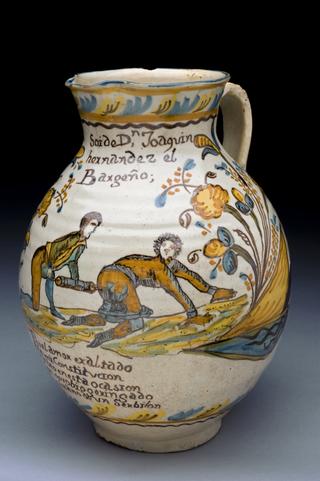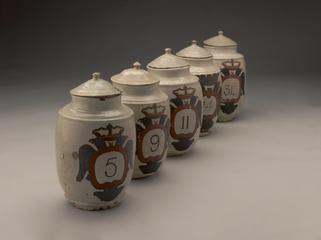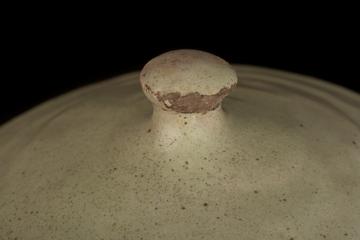




Late C16 Italian blue and white syrup jug from Liguria, used for olio scorpi: metioli
‘Olio scorpi: matioli AM’ is painted on this blue and white syrup jug. It reveals the jug held Matthiolus’ oil of scorpions. This elaborate preparation was devised by Italian botanist Pietro Andrea Gregorio Mattioli (1501-1577). Oil of scorpions was a cure for poisoning, and for the bites of ‘mad dogs, spiders, serpents…and also for the stings of wasps, hornets and scorpions.’ It was also thought to protect from plagues and expel worms from the body. The recipe uses an amazing array of ingredients. These include 100 year oil, St John’s Wort, holly thistle, vervain, juniper berries, sandalwood, rhubarb and saffron. ‘AM’ is thought to refer to the pharmacy where the jug was made. Pharmacists and apothecaries used jugs like this to store a wide range of preparations.
Details
- Category:
- Medical Ceramic-ware
- Collection:
- Sir Henry Wellcome's Museum Collection
- Object Number:
- A631926
- Materials:
- pottery, blue and white
- Measurements:
-
overall180: .75kg
- type:
- syrup jar


